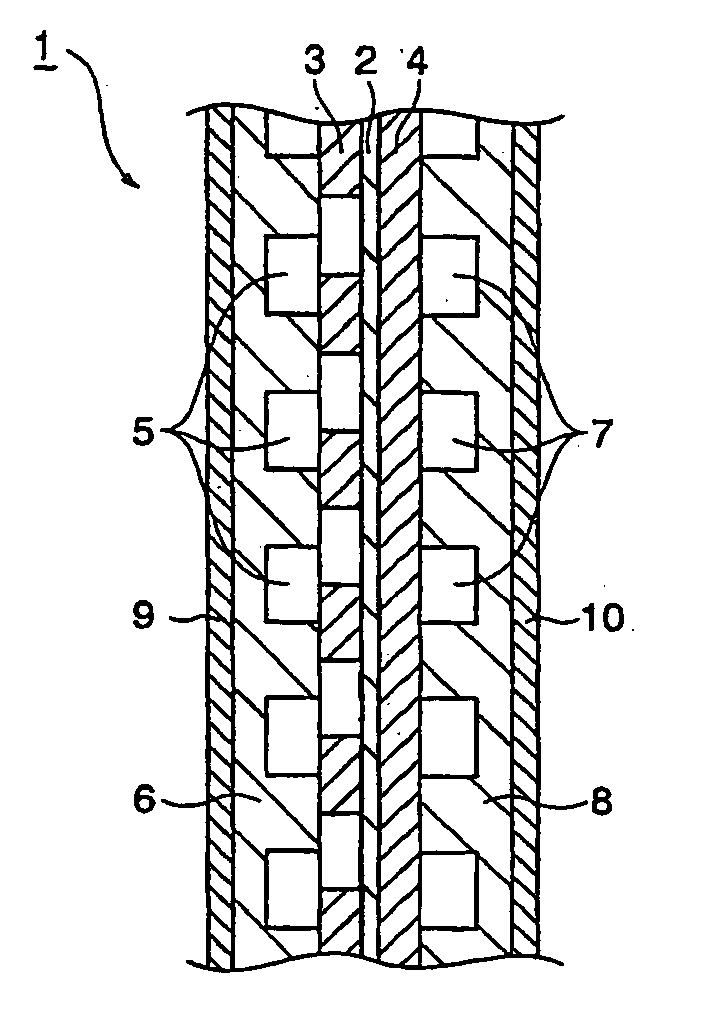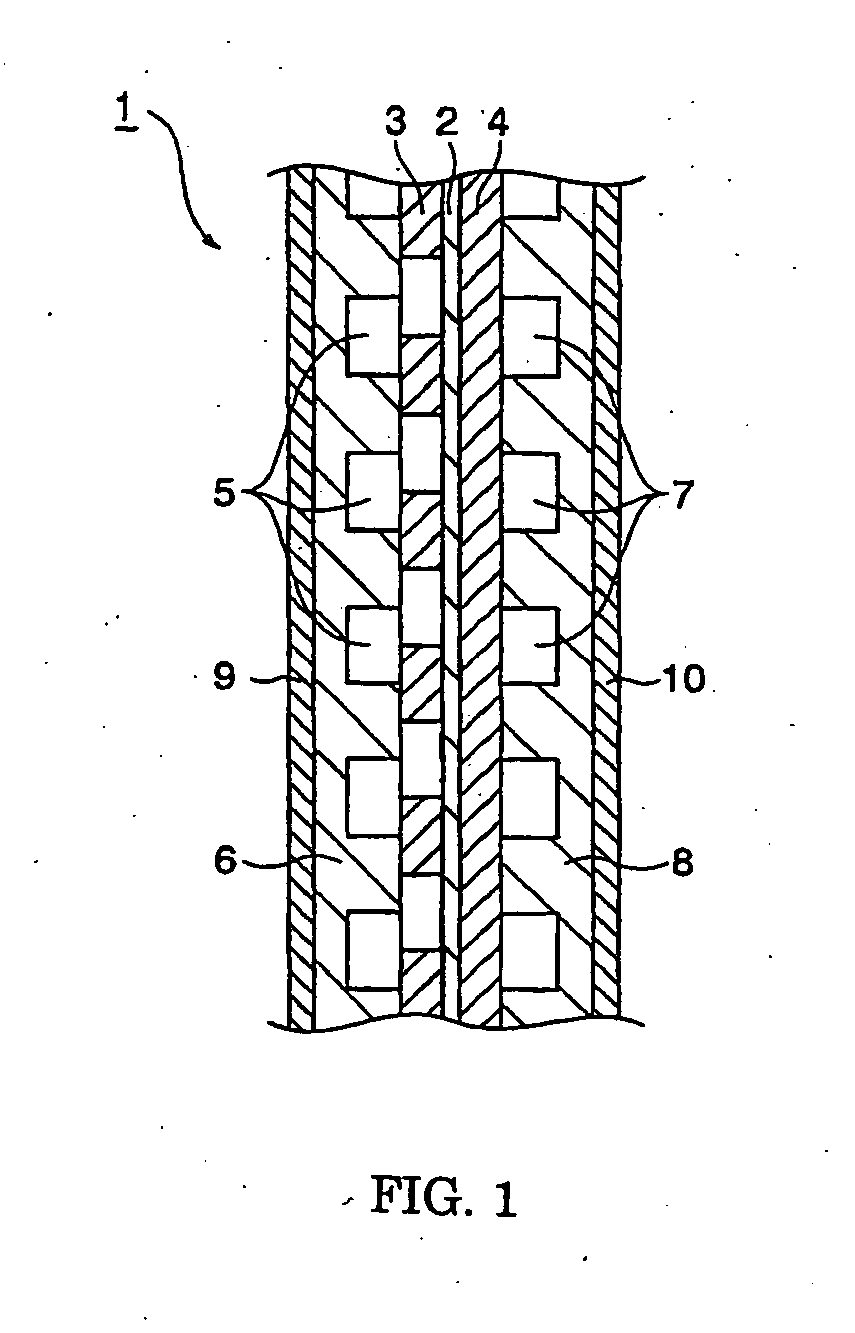Bipolar plate for fuel cell and method for production thereof
a fuel cell and bipolar plate technology, applied in the direction of cell components, final product manufacturing, sustainable manufacturing/processing, etc., can solve the problems of unsatisfactory solution, high material cost of bipolar plate including its process cost, and inability to meet the mechanical strength of the fuel cell, etc., to achieve better processability, durability and conductivity, and reduce the cost
- Summary
- Abstract
- Description
- Claims
- Application Information
AI Technical Summary
Benefits of technology
Problems solved by technology
Method used
Image
Examples
example 1
[0166] A SUS 316L plate having an electrode area for a cell of 10 cm.times.10 cm, thickness of 0.5 mm, and a flange having width of 3 cm including bolt holes and passages for liquid and gas was used as a metal substrate. This bipolar plate was processed for partition and current supply, and the surface thereof was subjected to a blast-treatment with grass beads. Then, the plate was pickled in 20% hydrochloric acid at 80.degree. C.-for 10 minutes, thereby activating the surface by the stainless steel elution of corresponding to thickness of about 0.05 mm.
[0167] After the metal substrate was dried, a platinum-group metal oxide was coated on the surface thereof as follows.
[0168] Chloplatinic acid and chlororuthenic acid were dissolved in 20% hydrochloric acid to provide a dipping solution such that the respective metals were contained in at 50 g / liter in the solution.
[0169] After the metal substrate was dipped in the dipping solution for 10 minutes at room temperature, the surface of t...
example 2
[0174] The bipolar plate having the same shape before the processing as that of Example 1 was fabricated by using the SUS 316L plate as the metal substrate. Then, the metal substrate surface was subjected to the blast-treatment in accordance with the same conditions as those of Example 1. Then, the metal plate was acid-washed in a mixed acid solution consisting of 2% hydrofluoric acid and 2% nitric acid for 5 minutes. The metal substrate after the washing and drying was dipped at room temperature for 15 minutes in a dipping solution containing 50 g / liter of ruthenium which was prepared by dissolving ruthenium chloride into 25% hydrochloric acid. Thereby, about 4 g / m.sup.2 of the ruthenium was precipitated on the metal substrate surface such that the surface was turned to black.
[0175] After the metal substrate was thermally oxidized similarly to Example 1, the X-ray diffraction analysis was conducted on the metal substrate with the result that the existence of the stainless steel and...
example 3
[0177] A titanium plate having an electrode area for a cell of 10 cm.times.10 cm, thickness of 0.5 mm, and a flange having width of 3 cm including bolt holes and passages for liquid and gas was used as a bipolar plate for a solid polymer electrolyte fuel cell. This bipolar plate was processed for separator and current supply, and the surface thereof was blasted with grass beads. Then, the plate was pickled in 20% hydrochloric acid at 95.degree. C. for 20 minutes, thereby activating the surface before the titanium corresponding to thickness of about 0.05 mm was eluted.
[0178] After the metal substrate thus treated was dried, it was heated for 1 hour at 550.degree. C. in air flow.
[0179] A conductive oxide coating (titanium oxide coating) was formed on the metal substrate surface as follows.
[0180] A hydrochloric acid solution of titanium tetrachloride was mixed with a mixed solvent containing 20% hydrochloric acid and n-propyl alcohol in a weight ratio of 1:1. To the mixed solvent, 10 m...
PUM
| Property | Measurement | Unit |
|---|---|---|
| temperature | aaaaa | aaaaa |
| thickness | aaaaa | aaaaa |
| thickness | aaaaa | aaaaa |
Abstract
Description
Claims
Application Information
 Login to View More
Login to View More - R&D
- Intellectual Property
- Life Sciences
- Materials
- Tech Scout
- Unparalleled Data Quality
- Higher Quality Content
- 60% Fewer Hallucinations
Browse by: Latest US Patents, China's latest patents, Technical Efficacy Thesaurus, Application Domain, Technology Topic, Popular Technical Reports.
© 2025 PatSnap. All rights reserved.Legal|Privacy policy|Modern Slavery Act Transparency Statement|Sitemap|About US| Contact US: help@patsnap.com


